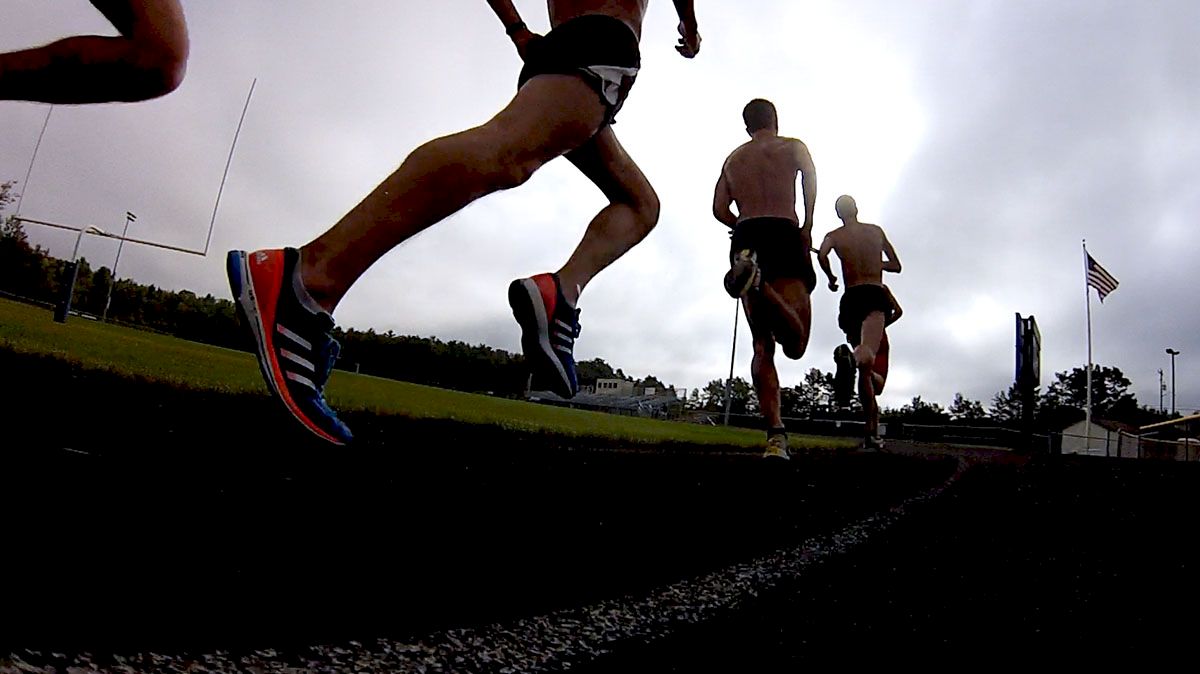Carrying The O2 by Danny Mackey
Carrying The O2 by Danny Mackey

Carrying The O2
by Danny Mackey M.S.
I was talking with a few athletes the other day about sicknesses and injuries in the pool. Through the sad cross training stories (we why were in the pool), anemia came up quite a bit. I originally had planned on discussing the “normal” structural running injuries, but figured the “not so normal” ones would fit better. One of the interesting trends I noticed....and you would to.....if you ever had anemia or some sort of sickness, is that you do not quite understand what is going on with your body. The Mayo Clinic has a through look at anemica here: http://www.mayoclinic.com/health/anemia/DS00321. Back in college one of our top runners just started to fall back more and more. So what did he do? Well like any one of us, he trained harder and harder, which put him more into a physical hole, on top of frustrating him mentally. Finally, he went to the physician and found out his ferritin (an iron-phosphorous-protein complex that normally contains 23% iron.) was 11 nanograms per milliliter. By the time they caught it the season was over for him because he just did not have enough time to bounce back. So since this is prevalent, the basics of blood physiology and anemia will be our focus.

Within our bodies, blood is the main transport median for oxygen from our lungs to our working tissues (primarily skeletal muscle during exercise, along with cardiac muscles). Blood carries oxygen in two different ways. One way is in a physical solution dissolved in the fluid portion of our blood (plasma). The other way is by combining (loosely combining that is) with hemoglobin. You have all probably heard of hemoglobin at some point. Hemoglobin is the iron-protein molecule inside the red blood cell. About 280 million hemoglobin molecules pack themselves into our 25 trillion red blood cells (note: this is why giving blood to doctors will NOT affect your performance, we have larger fluctuations just in our normal day to day activities). So, given the fact that we have this much hemoglobin, it also means that about 70 times more oxygen is dissolved here versus in our plasma.
Typically an athlete will go to doctor’s office because he or she assumes they are anemic, or something is wrong hormonally (hormones are an entirely other issue all together). There are three typical conditions that occur if an athlete is anemic; erythrocytes (red blood cells) are too small, hemoglobin is decreased, and ferritin concentration is low. Sometimes if you have gone to the doctor and your ferritin level were “normal” there is still a possibility that you may be anemic. Also, any systemic inflammation will raise your ferritin count. As endurance athletes, we are at risk of iron deficiency anemia and “exercise-induced anemia.” The doctor will check your hemosiderin (another protein that stores iron in the body) and ferritin levels as these constitute the intracellular iron storage in the liver, spleen and bone marrow. Low, inadequate iron intake from your diet (or if you have an issue with absorption of iron) will result in a reduced concentration of hemoglobin in red blood cells. If you have ever experienced this before, not fun, especially if you are trying to run fast, really not fun. You will be sluggish and fatigued throughout the day, you may crave ice (yeah weird), and you might also have difficulties concentrating at work or school and of course you will experience the inability to exercise at your previous levels of intensity. You might also have loss of appetite and even walking up a few flights of stairs may become a task. High amounts of training can cause problems because we lose a small amount of iron in our sweat, lose some hemoglobin in urine, from red blood cell destruction, maybe increased body temperature, even from our feet simply pounding on the ground (which is called foot-strike hemolysis), and finally gastrointestinal bleeding. After looking at that laundry list it is a wonder why we are not all anemic right?! Another issue is runners only absorb 16% of iron from the GI tract as compared with 30% in non-athletes who are iron deficient.
How can you prevent anemia? Take in adequate amounts of dietary iron, since this is the primary cause of iron deficiency. The recommended daily allowance is 15 mg per day for females (reason is because the average menstrual iron loss is 0.6 to 1.5 mg per day) and 10 mg per day for males. Just for reference, the average diet contains 5 to 7 mg of iron per 100 kcal, so if you eat 2000 kcal a day you should be getting the RDA easily.
A slight decrease in our hemoglobin can really hurt your performance on the track. For example, I wore a heart rate monitor during one of my workouts and I know from past testing done on myself that right around 170 beats per minute I am at my “lactate threshold.” In other words, I am primarily getting energy by anaerobic means. During this workout I was at 175 bpm already at the 800 meter mark of a 1600 repeat which was ran at 5k goal pace. This 3-4% difference can add 25-33 seconds onto a 14 minute 5k. Though drastic, it is not uncommon to see an athlete have a 10% decrease in performance.